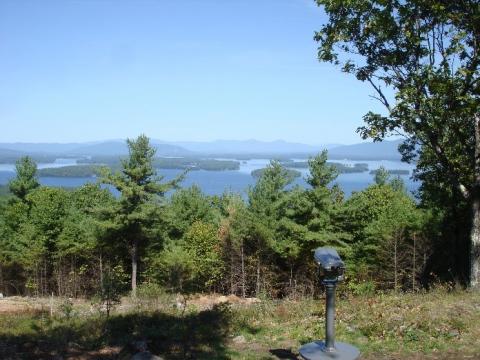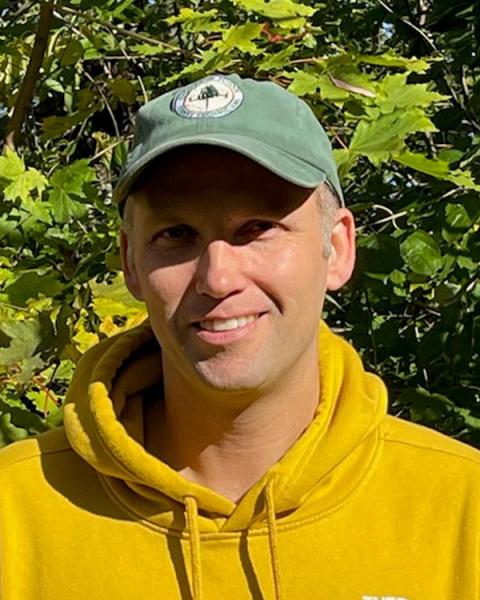White Mountain National Forest Provides Leadership on New Hampshire Burns

The Kimball Wildlife Forest is a 245-acre property entrusted to the town of Gilford and managed for the “study and enjoyment of wildlife.” From its peak on Lockes Hill, visitors can look north over Lake Winnipesaukee and beyond into the White Mountain National Forest.
Prescribed Fire at Lockes Hill
On May 10, 2018, the White Mountain National Forest Fire Crew, led by John Neely, executed a 10-acre prescribed burn on the top of Lockes Hill with support from the Gilford Fire Department, UNH Cooperative Extension, The Nature Conservancy and the NH Prescribed Fire Council.
Sandra McGonagle, Chair of the Kimball Wildlife Forest Committee, the town-appointed group that oversees the management of the property, commented, “We are very grateful to the White Mountain National Forest Service for their willingness to share resources and expertise with local communities while meeting important statewide landscape-level goals. Their commitment, leadership, and professionalism was exceptional—the foundation for our successful project. The burn supported multiple goals that the Kimball Wildlife Forest Committee has, including the trail systems and educational opportunities in our forest. We are reintroducing blueberries on the hillside, and supporting recreation, wildlife habitat, and silvicultural research.”
Goals of the Prescribed Fire
There were numerous goals associated with the burn including: maintaining young forest habitat, encouraging blueberries for recreationalists, promoting oak as a hard mast food source for wildlife, reducing less desirable softwood and hardwood species, fire research, demonstrating the effects of fire for natural resource professionals and the public, and reintroducing fire into the landscape.
Prescribed fire is an underused management tool in New Hampshire with less than 1,000 acres burned per year in a state with 4.8 million forested acres. In order to accomplish cooperative projects, increase the annual acreage burned, reduce barriers to prescribed fire implementation, and educate the public, New Hampshire developed a prescribed fire council in 2010.
N.H. Prescribed Fire Council
A prescribed fire council is a collection of stakeholders with an interest in prescribed fire. The New Hampshire Prescribed Fire Council includes the N.H. Division of Forests and Lands, N.H. Fish and Game, N.H. Department of Environmental Services, U.S. Forest Service, U.S. Air Force, University of New Hampshire, N.H. Fire Training Academy, a local Fire Department representative, The Nature Conservancy, and The Forest Society among others.
Since the group’s inception, the N.H. Prescribed Fire Council has identified and reduced barriers to prescribed fire use in the state. They developed recommended best practices for burning in New Hampshire, approved qualification standards that allow the entities to work collaboratively on each other’s burns, signed a memorandum of understanding that supports resource sharing among members, improved training between members, and provided outreach to the public.
The Kimball Wildlife Forest project is a shining example of a project that would not have been realistic 10 years ago and is now possible through local, state, and federal cooperative efforts. “There is a lot of prescribed fire operational knowledge concentrated among a few entities. The Forest Service’s genuine desire to engage the community and share their technical expertise through our agreements is a model of cooperation and leadership. This project would not have taken place without the foundation work conducted by the New Hampshire Prescribed Fire Council and its members such as the Forest Service,” notes Andy Fast, a county forester with UNH Cooperative Extension who was involved in the project.


